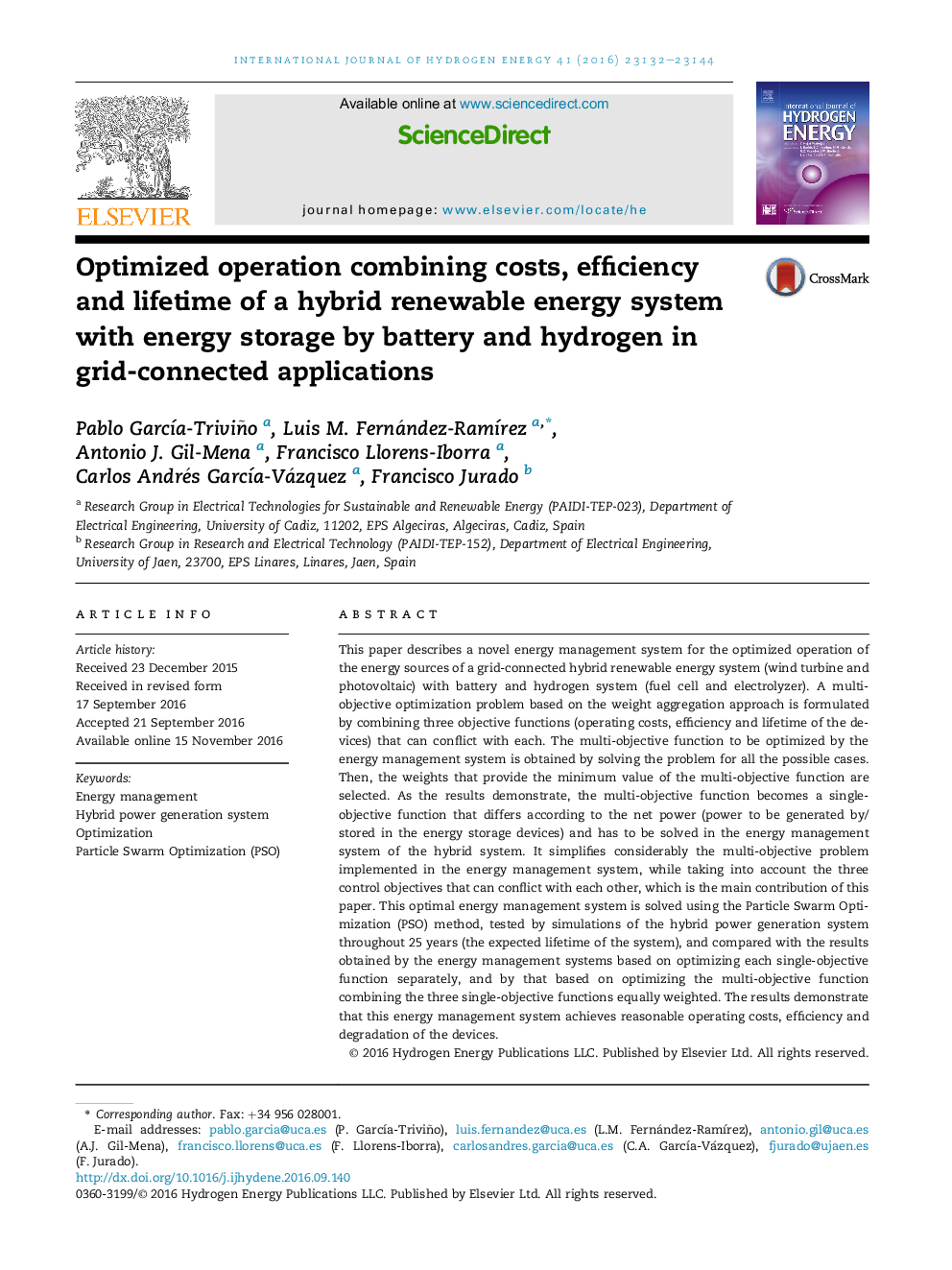| Article ID | Journal | Published Year | Pages | File Type |
|---|---|---|---|---|
| 5145836 | International Journal of Hydrogen Energy | 2016 | 13 Pages |
â¢A control system for optimal operation of grid-connected hybrid system is evaluated.â¢A multi-objective optimization problem is formulated by combining three objective functions.â¢The optimization problem becomes a single-objective function depending on the net power.â¢The control system achieves reasonable operating costs, efficiency and degradation of the devices.
This paper describes a novel energy management system for the optimized operation of the energy sources of a grid-connected hybrid renewable energy system (wind turbine and photovoltaic) with battery and hydrogen system (fuel cell and electrolyzer). A multi-objective optimization problem based on the weight aggregation approach is formulated by combining three objective functions (operating costs, efficiency and lifetime of the devices) that can conflict with each. The multi-objective function to be optimized by the energy management system is obtained by solving the problem for all the possible cases. Then, the weights that provide the minimum value of the multi-objective function are selected. As the results demonstrate, the multi-objective function becomes a single-objective function that differs according to the net power (power to be generated by/stored in the energy storage devices) and has to be solved in the energy management system of the hybrid system. It simplifies considerably the multi-objective problem implemented in the energy management system, while taking into account the three control objectives that can conflict with each other, which is the main contribution of this paper. This optimal energy management system is solved using the Particle Swarm Optimization (PSO) method, tested by simulations of the hybrid power generation system throughout 25 years (the expected lifetime of the system), and compared with the results obtained by the energy management systems based on optimizing each single-objective function separately, and by that based on optimizing the multi-objective function combining the three single-objective functions equally weighted. The results demonstrate that this energy management system achieves reasonable operating costs, efficiency and degradation of the devices.
